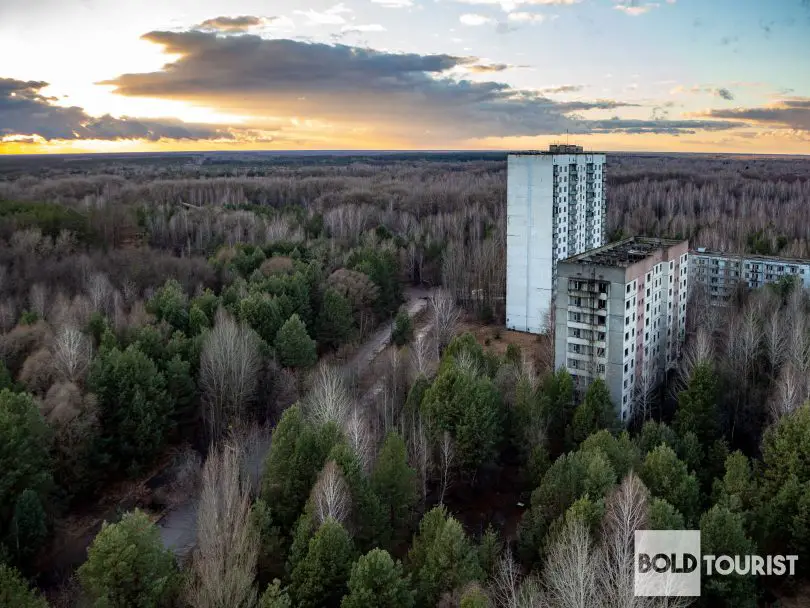What is Chernobyl?
If you’re interested enough in Chernobyl to read this, you probably know the story and significance of Chernobyl. If not, the Chernobyl power plant was the source of the worst nuclear disaster in history. On April 26th 1986, reactor number four suffered a meltdown and explosion following a power failure test. You can read far more about it here: https://en.wikipedia.org/wiki/Chernobyl_disaster.
Where is Chernobyl?
Chernobyl and the surrounding areas of interest like Pripyat and the power plant are located in northern Ukraine, near the border of Belarus.
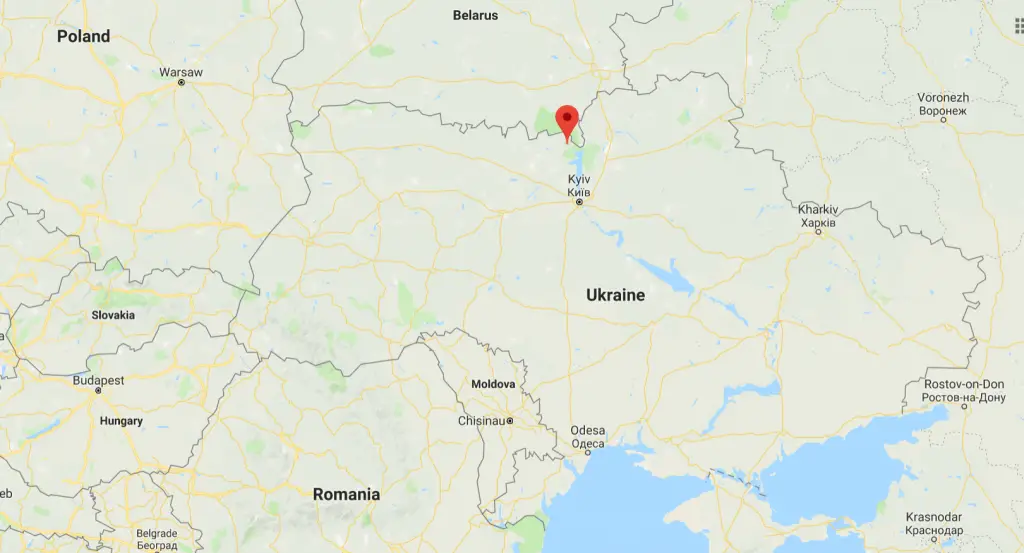
Is Chernobyl safe to visit?
Yes, Chernobyl is safe to visit. That isn’t to say there is no risk in visiting the site of a nuclear disaster of this magnitude. As long as you don’t go running naked through the Red Forest or camp in the basement of the hospital, you’ll be fine.
Is Chernobyl abandoned?
The town of Chernobyl is not abandoned. It is actually home to over 2,000 workers while they work 15 days on/15 days off shifts. There is also a small market, post office, and visitor’s hotel. We stayed in the Hotel Desiatka, the only hotel for visitors in the exclusion zone.
How did you get access to the exclusion zone and the power plant?
Honestly, it was easy. We booked a tour and they handled all of the technicalities for us. We booked a two day private tour through the tour company Chernobyl Welcome.
You spent the night in Chernobyl!? Where did you stay?
We spent one night in the Desiatka Hotel inside the Chernobyl exclusion zone. You can read our review of the Desiatka hotel here.
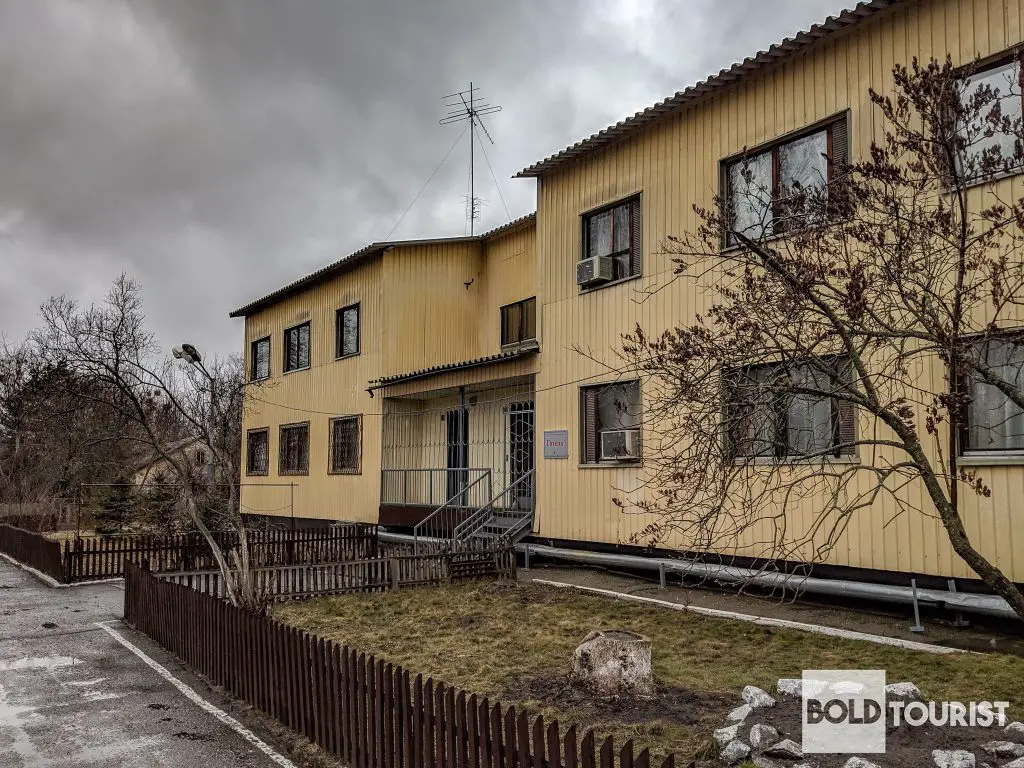
Did you wear a hazmat suit?
While we were in Chernobyl and Pripyat, we were required to wear closed toed shoes and long pants. When we were on the tour of the Chernobyl power plant, we were provided a lab coat, head cover, shoe covers, and as our guide said, a “Soviet coat”. It got quite cold in some parts. There were a few areas of the power plant where we also had to wear gloves and a face mask, also provided. All of the protective clothing was mainly to protect from potential radioactive dust particles.
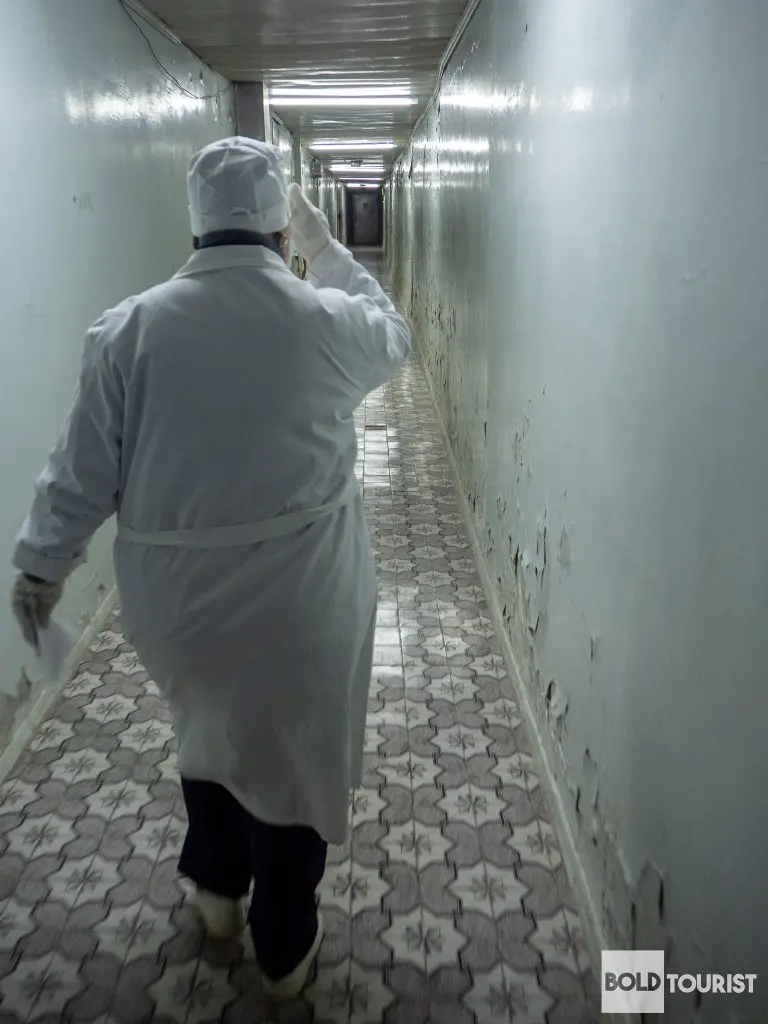
How much radiation were you exposed to?
Overall, not a lot. There were a few “hot spots” with elevated radioactivity levels. We were always with guides that knew where these places were and how much time could safely be spent in them.
In 2008, the United Nations Scientific Committee on the Effects of Atomic Radiation published that the average dose of radiation to humans during a year of normal life is 2.4 mSv. On average, we typically saw .02 to .03 mSv per hour while in Pripyat. On the edge of the Red Forest, that jumped to 7 mSv/hour.
What were the highest radiation levels you saw in Chernobyl?
The highest readings on our dosimeters were found inside the power plant, at the memorial for Valery Khodemchuk, which shared a wall with the destroyed reactor number four. Here, we were exposed to 30-40 mSv/hour for just a few minutes.

What is a fatal dose of radiation?
Four to five Sieverts (not micro sieverts, like we saw) over a short period of time would be a fatal dose to 50% of people according to the US Nuclear Regulatory Commission.
Did you have a Geiger counter?
Yes, each of us had a Terra-P brand dosimeter with us at all times.
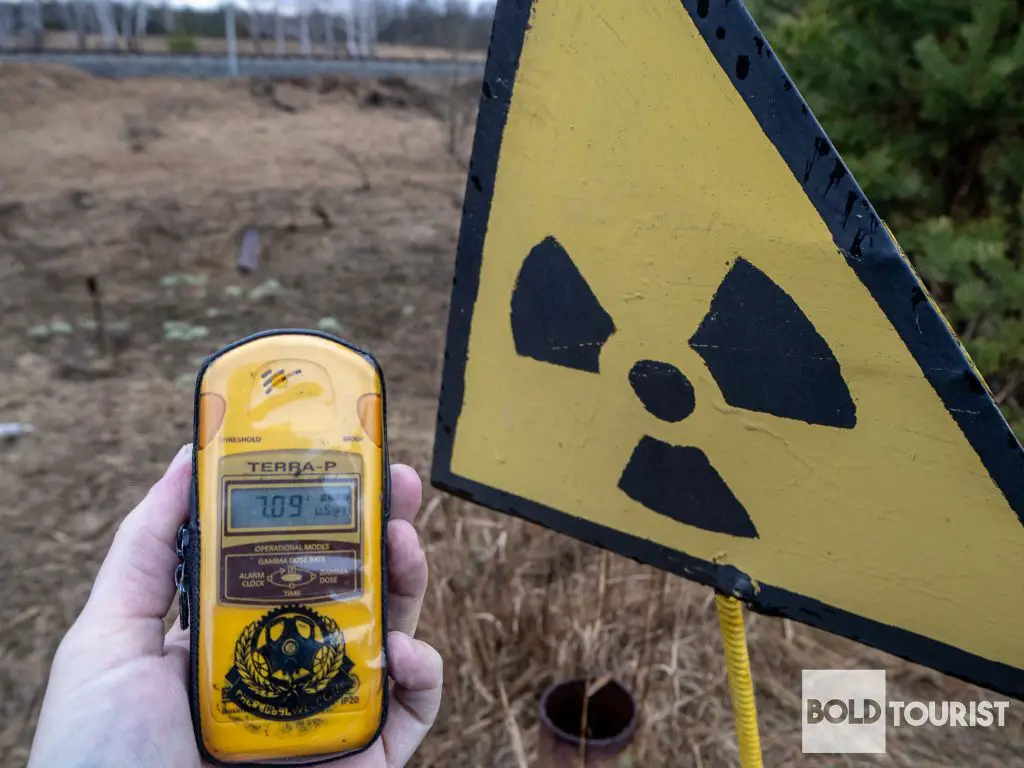
Do you have more pictures?
Yes, many! You can see our photos of Chernobyl, Pripyat, Duga-1, and the Chernobyl power plant here.
Is the Chernobyl Power Plant still operating?
There are still around 2,100 workers at the power plant although all of the reactors have been shut down and it is no longer producing power.
What are the current plant workers doing?
The workers continue to monitor the old reactors, oversee construction of spent fuel containment facilities for the Chernobyl plant and other nuclear power plants around Europe, and are working on finishing construction on the New Safe Confinement structure.
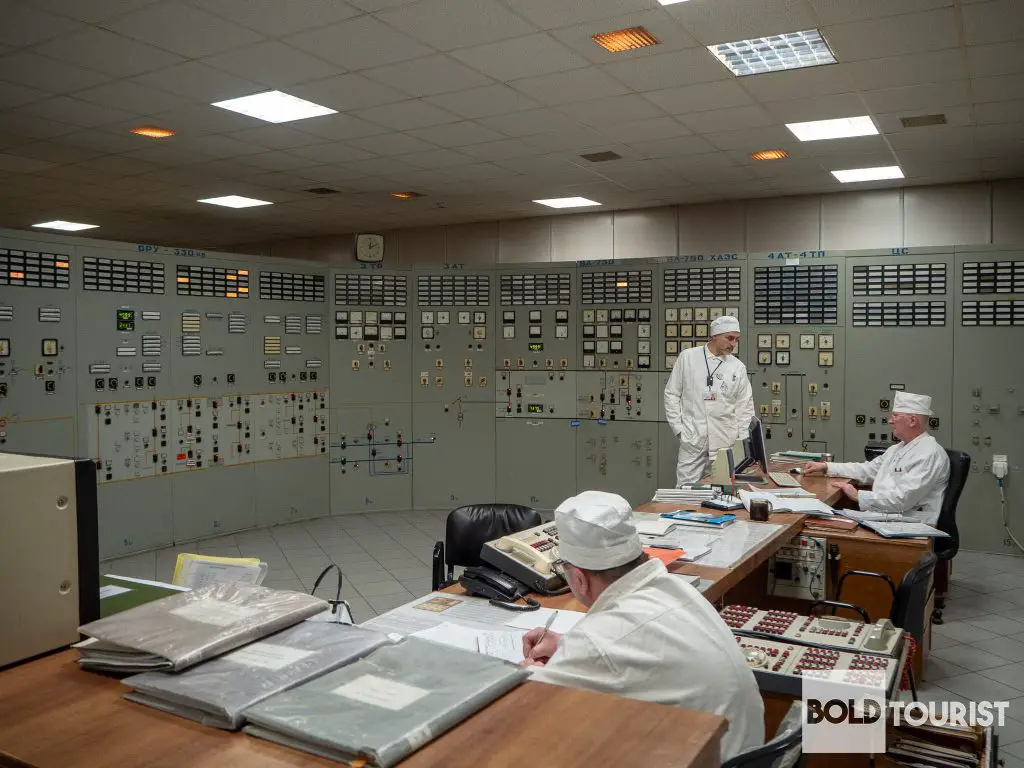
What is the Golden Corridor?
The Golden Corridor is the iconic hallway that connects the first and second phases of the power plant, reactors 1-4 and their control rooms. It is lined with golden colored aluminum walls for aesthetics and also as a means of radiation protection.
Did you go into reactor number 4?
No, we wish! Reactor 4 has long been closed off. I’m sure you can find some YouTube videos of people going inside, but for our tour, the closest to going inside to Chernobyl reactor number 4 was the end of the Golden Corridor. At the end of the hallway is the door leading to reactor 4. We saw this, but did not go any further. We did go through a doorway near it and skirted the concrete walls to the memorial to Valery Khodemchuk and the circulating pumps for reactor 3.
Are there stray dogs in Chernobyl and are they dangerous?
Yes, there are many stray dogs in Chernobyl and Pripyat. If you’ve seen the movie Chernobyl Diaries, you may think they are crazed animals hellbent on killing visitors. This couldn’t be further from the truth. Every single dog we encountered was just a chill doggo that wanted some pets, scritches, and treats.
All of the dogs we saw looked to be healthy. Lots of dogs liked to hang out around checkpoints, the power plant cafeteria, and common areas in Chernobyl town. Basically, where humans are. All of the dogs all had ear tags with dosimeters attached and the checkpoint guards, while a bit menacing looking, were quick to toss them treats. For strays, they all looked well cared for.
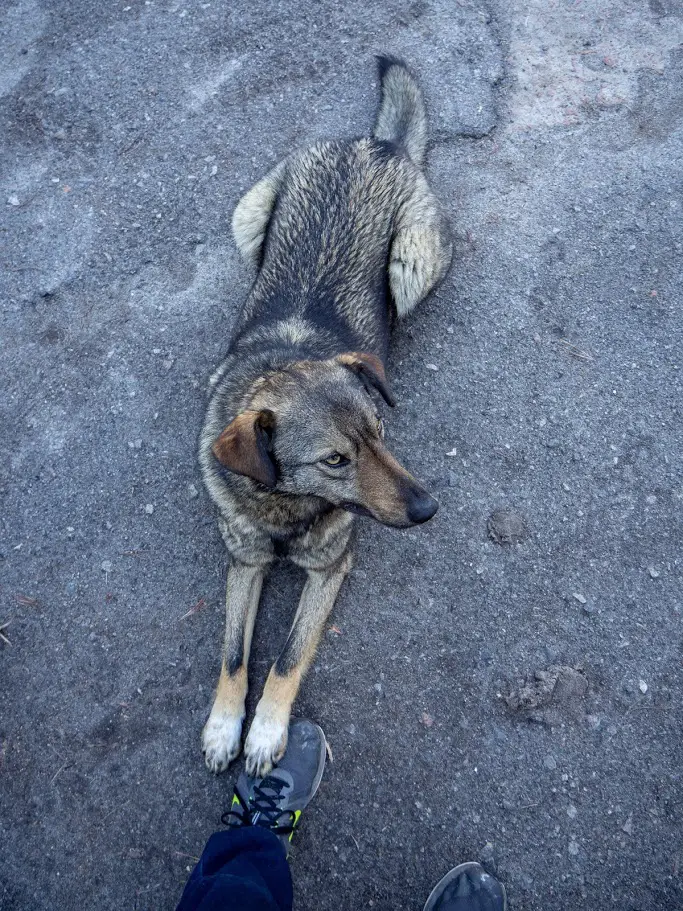
Can you pet the dogs?
Despite what some random sites on the internet might say, there are no rules against interacting with the dogs. All of the dogs in Chernobyl that we saw were extremely friendly and very appreciative of interaction and ear scratches. Which we absolutely gave them. If we were worried about anything from touching them, it was fleas, not radiation.
If you are interested in helping aid the dogs of Chernobyl, check out Clean Futures. They help manage the stray dog population, provide vaccinations, spay/neutering, and other support to the Chernobyl dogs. Here is their GoFundMe.

